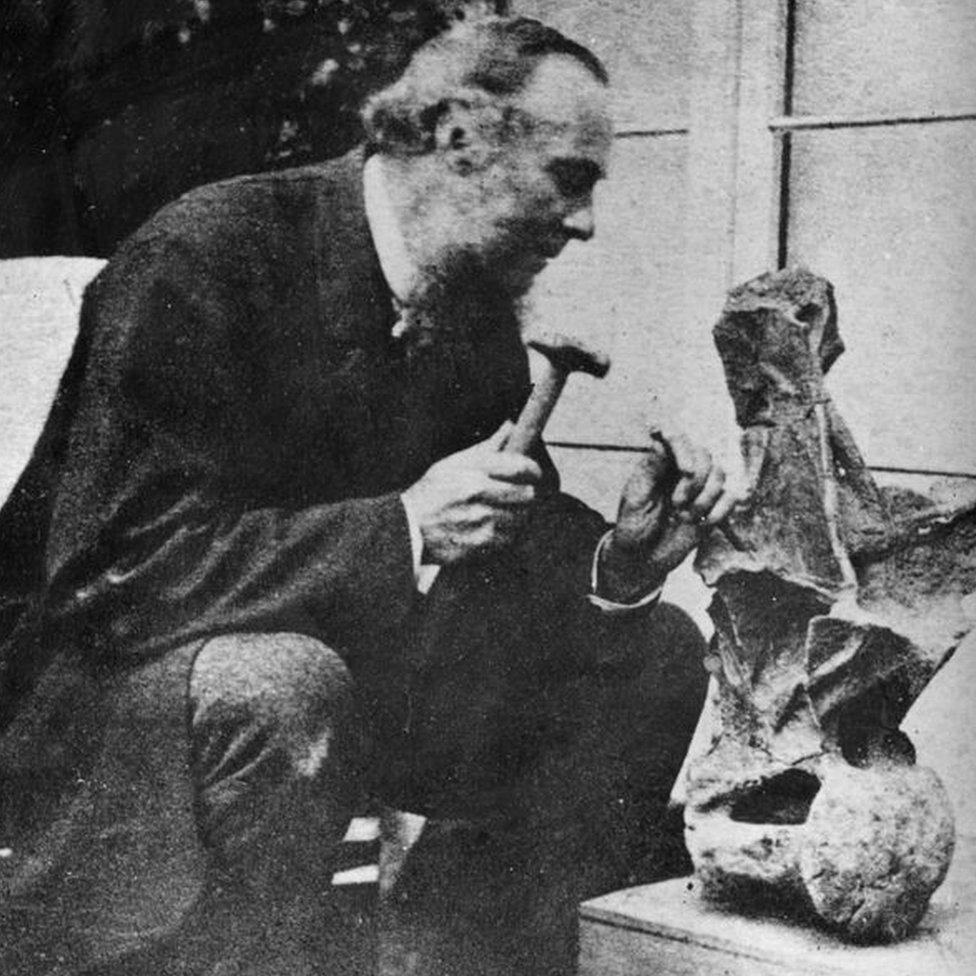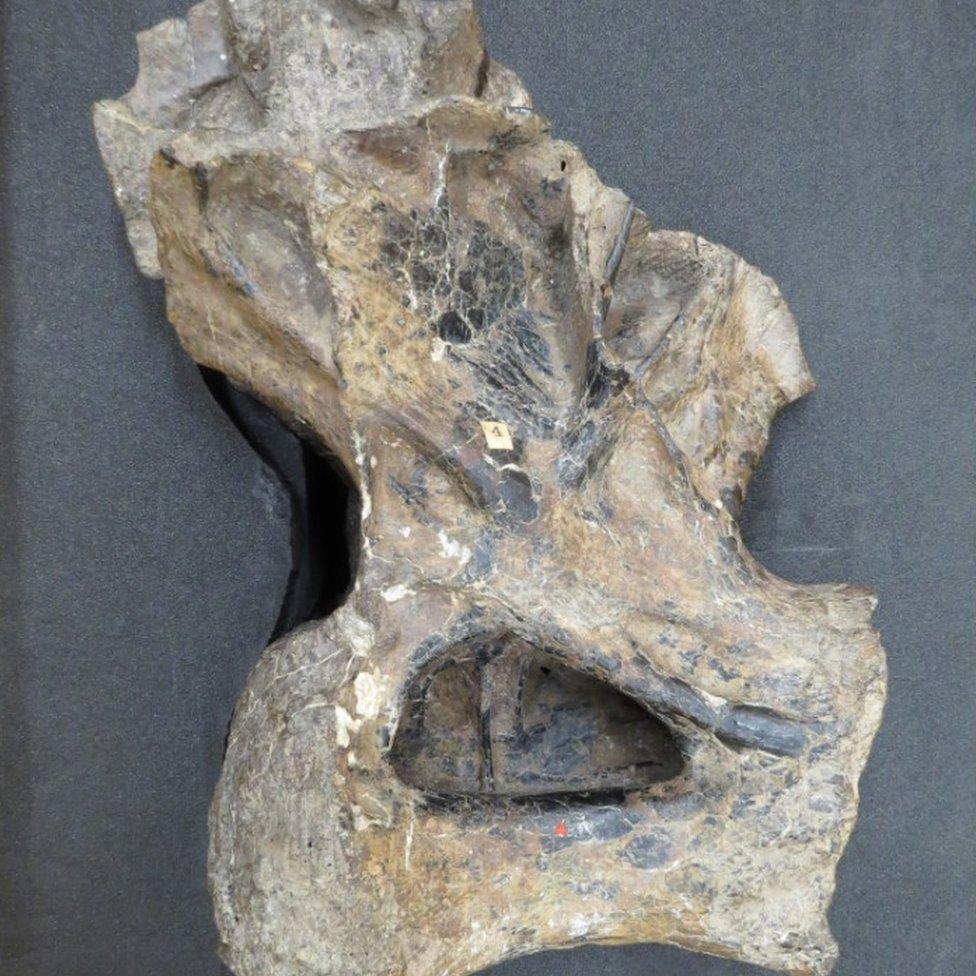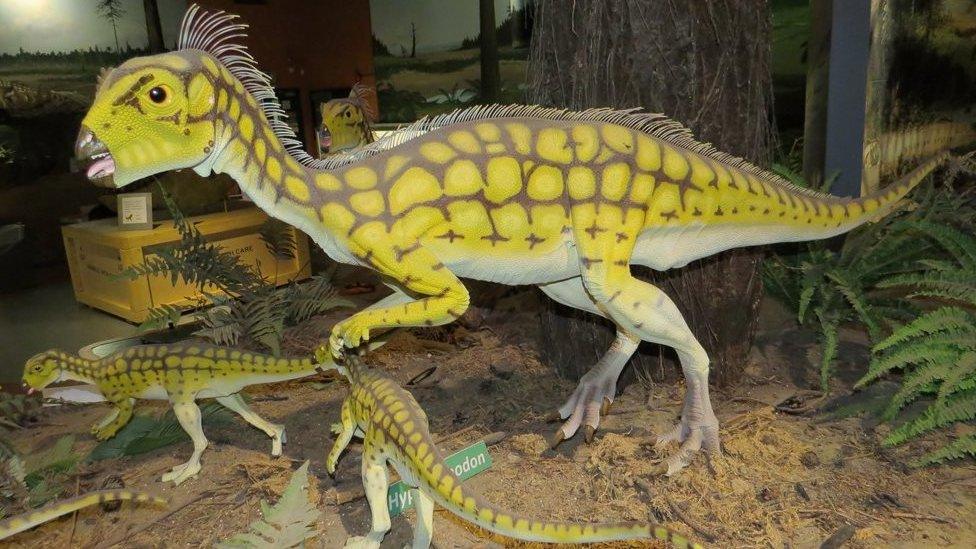Palaeontologist William Fox's dinosaur fossil finds displayed
- Published

Rev William Fox had four dinosaurs named after him
Fossils discovered by a Victorian clergyman who had four dinosaurs named after him are being exhibited on the Isle of Wight.
Among Rev William Fox's finds was one of the first, almost complete dinosaur fossils - a partial skeleton of a plant-eating Hypsilophodon foxii.
Some of his fossils are being displayed at Sandown's Dinosaur Isle Museum.
A walking trail of routes in Brighstone that Fox used when making his discoveries has also been launched.

Some of Fox's fossils are being exhibited at Sandown's Dinosaur Isle Museum - including a 20kg (44lb) vertebrae
Dr Martin Munt, curator of the museum, said it was "an opportunity for island residents to learn more about our wonderful heritage".
The events have been funded by the Royal Society's Local Heroes scheme, which provides cash for exhibitions and events that reveal stories of "scientific brilliance", Isle of Wight Council said.
The authority said prior to this recognition "a barely marked grave" and an "improvised plaque" were all that remained to mark Fox's life.


The four dinosaurs named after Fox:
Polacanthus foxii, 1865 - a 5m (16ft)-long armoured dinosaur
Hypsilophodon foxii, 1869 - a 2m (6.5ft)-long small ornithopod
Eucamerotus foxii, 1872 - a sauropod dinosaur of uncertain size
Calamospondylus foxii, 1889 - a small carnivorous dinosaur about 3.5m (11ft)-long
Copies of the Fox walking trail map are available as free downloads from the Dinosaur Isle Museum website, external.